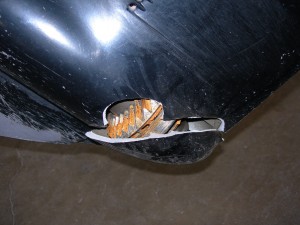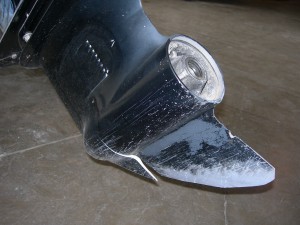Does Winterizing a Boat Involve more than Draining the Engine
Question: Why should I pay $100+ to have my sterndrive or inboard model boat winterized when I can do it myself. Isn’t draining the engine all they really do?
Answer: There’s certainly no shortage of opinions to this age old question that all boat owners north of Miami Florida face at some point in time. So let’s dig in a little and take a look.
While draining the engine is certainly a big part of the winterization process there are many other equally important items you’ll want to consider. Here’s an overview of the process we utilize when winterizing an Inboard/Sterndrive model boat and motor.
- Drain the engine – Engine models vary along with the specific engine and manufacturer. You’ll want to follow your manufacturers instructions to make sure you don’t miss an unforeseen drain point. Reinstall the drain plugs after this step.
- Trim the Sterndrive down if equipped – This allows the sterndrive water passage to drain.
- Take a sample of the sterndrive gear lube. If there are any signs of water in the gear lube you’ll want to pressure test the lower unit. The associated images represent a case where the owner winterized himself and skipped this step. Although this is an extreme case with regards to the amount of water that was entering the gear lube, even a small amount of water will dilute the gear lube and fail the sterndrive in a short period of time. NOTE: On Mercruiser Alpha Sterndrives or Mercury Outboard Motors the lower drive shaft seal on the bottom side of the water pump is normally the culprit when water is in the gear lube. This following video is for a Mercury Outboard Motor but the lower unit is basically the same as the Mercruiser Alpha Sterndrive and therefore illustrates all of this very clearly.
- Top off the fuel tank with ETHANOL FREE gasoline. Introduce the recommended amount of fuel storage treatment. This will vary based on the size of your fuel tank. NOTE: If you have a diesel powered boat use the proper diesel fuel and treatment.
- Run the engine while introducing environmentally friendly Propylene Glycol Antifreeze into the coolant system. Most manufacturers recommend using a small screwdriver or piece of wire to make certain the drain holes are open when draining (see step 1). We however feel like storing the engine with antifreeze in the coolant passages is a better option than draining and leaving the engine dry over the winter because it accomplishes two important purposes. First – If there happens to be any debris remaining in the engine or exhaust system that is preventing 100% of the water from being drained, this then ensures that that trapped water gets diluted to the point it will not be an issue. Draining the engine 1st ensures that you end up with a high enough concentration of antifreeze throughout the system to adequately protect form freezing. Second – The antifreeze acts as a corrosion inhibitor to prevent corrosion during storage.
- Fog the engine by introducing engine storage treatment directly into the fuel system to protect both the fuel system and combustion side internal engine components.
- Disconnect the battery
Note: Different manufacturers may require different steps to be taken. This article provides a basic guide to illustrate that there is in fact more to winterization than simply draining the engine. We recommend following your manufacturers instructions.
Additional Boat Winterization Videos


